You are here
Program LifeWatch Biodiversity Day, 28 October '21
KEYNOTE 1: Biotelemetry – Panoramic view into the aquatic world and a potent tool in the fishery manager’s toolbox (Kim Aarestrup, DTU Aqua, National Institute of Aquatic Resources)
Telemetry is the transmission of remotely obtained information. It is one of the fastest growing methods used in aquatic science and fishery management today and not without reason. A growing suite of methods is used over a continuum of scales in freshwater and marine environments to address a wide range challenges. Methods range from hand-operated systems that are used to identify the locations of a limited number of fish every few hours to automatic systems that monitor the position of many individuals in three dimensions in near real-time. To cover large areas, remote methods such as archival tags or pop-up satellite transmitters, and large networks of acoustic arrays are also used. Telemetry can often be the key to collecting fundamental data relating to field-based questions. DTU Aqua have used telemetry as one of the primary methods for many basic science and fisheries management related challenges for the last decades. Telemetry studies often reveal many previously unknown behavioural characteristics as well as overturning many dogmas within fisheries science. This knowledge is crucial for helping to build biologically realistic models and helps future management options. I will give some examples from our institute of the contributions various telemetry methods has made to fisheries science and management studies of larger migratory fish species including salmon, trout, pike, eel and Bluefin tuna are benefitting significantly from the application of a variety of methods of telemetry, including radio-, acoustic-, PIT, and archival and satellite telemetry. The outcomes of these studies demonstrate the huge impact the advent of telemetry has had on the fisheries science and management, as well as the societal benefits that improved knowledge of fish behaviour can bring.
Building a bird tracking network through science, citizens and mobile phones (Eric Stienen, INBO)
A few centuries ago the whereabouts of birds could only be tracked by networks of volunteers who read the individual codes on plastic leg-rings by means of telescopes and binoculars. In this way, for some species (notably gulls) large databases on resightings were built that gave insight in their migration routines and habitat use, and enabled to accurately estimate their survival probabilities. In the breeding colonies along the Flemish coast, studies of colour-ringed gulls revealed a high mate and site fidelity. Despite these rigid characteristics strong population and behavioural shifts occurred leading to increased interactions with humans. To better understand and monitor the movements of the gulls, in 2013 a high-tech sensor network was built using solar powered GPS-trackers mounted on the birds. These trackers store data on the birds’ positions until it can be transmitted to a ground station using Bluetooth communication. In 2013-2019, the network was expanded with more individuals, new bird species and additional ground stations. Since 2020, GPS-GSM trackers are used that transfer the data via the existing GSM/GPRS/3G network. Meanwhile, the involvement of citizens reading rings was strengthened. They can now report their sightings through a centralised website and include pictures that may give new insights in the birds’ behaviour and moult patterns.
Dr. Eric Stienen is responsible for the studies of seabirds at sea and coastal breeding birds at the Research Institute for Nature and Forest (INBO)
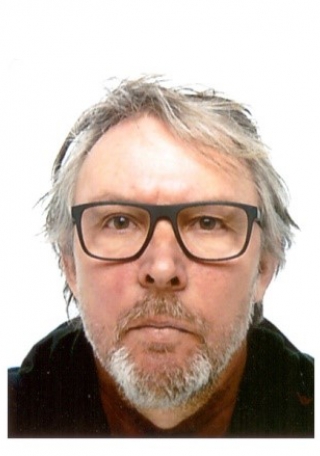
How the whereabouts of fish help for species conservation and impact assessment (Jan Reubens, VLIZ)
Fish play an important role in aquatic environments. But they are exposed to many types of human disturbances. Habitats are altered, obstructions hinder migration, fisheries activities influence growth rates and stock sizes, sounds change movement and activity behavior, so do artificial structures.
To protect the fish species and have a proper conservation/management plan in place, it is important to carefully assess human impacts and understand life-history characteristics in relation to their environment.
Many studies have been performed in lab conditions to simulate disturbances and stressors to assess the species capability to cope with these. However, to fully understand the impact or the natural behaviour, field studies need to be performed.
As direct observation methods are nearly impossible in aquatic environments other techniques are needed to observe species’ behavior. In this talk I will guide you through the suit of tracking techniques that can be used to follow the fish and for what purposes they are suitable.
Several examples will be given from both the marine and fresh water environment.
Jan Reubens completed a PhD in marine sciences (investigating the effects of offshore wind farms on benthopelagic fish). He is working as senior science officer at VLIZ being responsible for the Belgian Acoustic Receiver Network (a Permanent receiver network) and supervising several PhD studies related to fish tracking. He is currently the chair of the COST Action ‘the European Tracking Network’

CATREIN, the camera trap snowball effect (Jim Casaer, INBO)
Since the start of the LifeWatch CATREIN project in the National Park Hoge Kempen in 2017, the LifeWatch camera trapping research instructure has really taken off.
The number of camera trapping projects and focal species boomed over the last 5 years, and now includes monitoring of partridge, beaver, wolf, lynx, muskrat and muntjac, in addition to the original wild boar and roe deer. The topics broadened from understanding human-wildlife interactions – as part of a sustainable coexistence in the anthropogenic landscape – to evaluating population recovery and management actions, the use of ecological infrastructures, and invasive species control.
A first PhD based on this research infrastructure was successfully finished and a second one is halfway. The infrastructure also provided data for several master and bachelor theses and internships.
All data collected by the research infrastructure are uploaded to Agouti, a dedicated management system for camera trap data. New features developed for Agouti include automated species recognition using AI and standardized data export. Exploration tools that make use of the standardized data export are being developed and tested by members of the Agouti users community, and a first open dataset was published on Zenodo and GBIF.
Jim Casaer is a senior scientist at INBO. As member of the wildlife management and invasive species research group his research focuses on the ecology and management of ungulate species such als wild boar and roe deer. The use of camera traps for studying all kind of wildlife species plays a key role in this research at the moment.
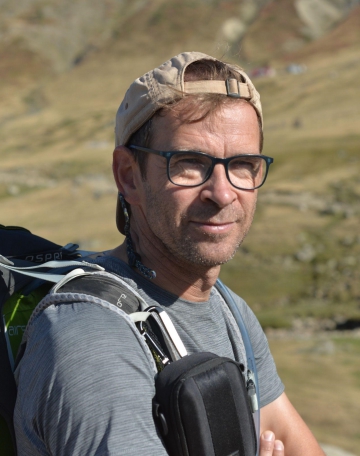
Plankton in focus: from microscopy to semi-automated imaging techniques (Isabelle Rombouts, VLIZ)
Plankton are a highly diverse group of microscopic plants (phytoplankton), animals (zooplankton) and microbes (bacteria, archaea and viruses) but only a fraction (<10%) of the estimated total plankton biodiversity is inventoried today. Our understanding of plankton abundance and diversity is still highly fragmented due to a paucity of data and lack of standardization in sampling and analytical methods. For the study of biodiversity of plankton in the Belgian Part of the North Sea (BPNS), VLIZ performs high-throughput plankton observations sampling using novel and cost-effective imaging processing techniques, such as the ZooScan and the Video Plankton Recorder. In the framework of LifeWatch a semi-automated workflow was developed for processing, analysis and data exchange of the collected plankton data. The data are made available in a virtual lab where the end users can visualize and analyze data in an online environment.
Isabelle Rombouts is a postdoctoral researcher at the VLIZ Marine Observation Center (MOC). Her research focuses on the investigations of plankton diversity and pelagic ecosystem functioning from a fundamental and an applied perspective. With the onset of the Marine Strategy Framework Directive (MSFD) in Europe, Isabelle has contributed to the development of diversity indicators for national (French and Belgian) and regional (OSPAR) assessments for Good Environmental Status.
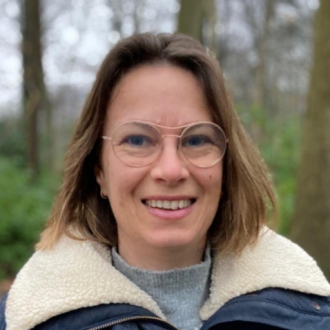
Cetacean acoustic network (Elisabeth Debusschere, VLIZ)
Harbour porpoises are currently the most abundant marine mammals in the North Sea since they made a return in our water at the end of the 20th century. Such apex predators are protected by national and international law and could serve as an ecosystem and climate sentinel, providing ecosystem health information over trophic levels and spaces. Long-term high frequency observations of these animals over decades is important to capture the trends beyond their seasonal and yearly fluctuations. The Belgian part of the North Sea (BPNS) is a heavily used region and comprises a lot of pressures for cetaceans. Within the Belgian LifeWatch framework, a Cetacean passive acoustic network is developed and installed to listen passively to the presence of these vocal cetaceans. Currently, eight bottom moored stations are active across the BPNS and two stations are located at the Dutch border in the offshore concession zone. The fact that these marine mammals are highly mobile, international collaboration and data sharing is important to enhance knowledge on their ecology, population levels and distribution. The development of the ‘underwater acoustics’ component within the LifeWatch virtual research environment developed for the European Tracking Network, is a significant step towards collaboration at European level.
Elisabeth Debusschere completed a PhD in marine sciences (investigating the effects of pile driving underwater sound on juvenile and larval fish). She is working as senior science officer at VLIZ being responsible for the Acoustic Sensor networks (Cetacean passive acoustic sensor network, broadband acoustic network, sensor network for bat detection).
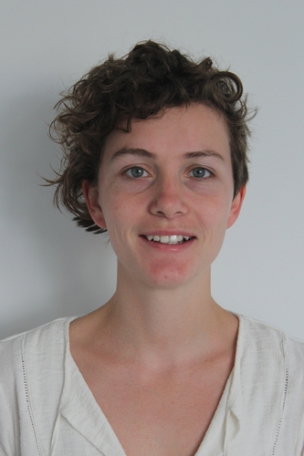
A sensor network for bat detection: boosting our knowledge from almost zero to beyond the simple basics (Bob Vandendriessche, Vleermuizenwerkgroep Natuurpunt)
Bat migrations in Europe have been studied for about a century now, but only recently our knowledge is passing beyond the simple basics. While bat banding in Europe started in the 1930’s and gradually delivered proof of seasonal long distance movements by several species across Europe, the use of permanent acoustic monitoring started only a decade ago. Even more recent, radiotracking combined with a permanent network of receivers (MOTUS) really boosted knowledge. Since 2014, the Lifewatch infrastructure in Flanders has provided more than one piece of the European puzzle on bat migrations. For migrating bats, the stakes are high: the ever increasing abundance of artificial light at night (ALAN) and the ongoing and much needed development of windfarms are just two of many risk factors they face in the anthropogenic landscape.
Bob Vandendriessche is working as a bat conservation professional at the Regionale Landschappen in the coastal province of West-Vlaanderen. He has conducted and supervised several bat research and bat conservation projects in Belgium and abroad. Currently he is chair of the Bat Working Group of Natuurpunt Studie.
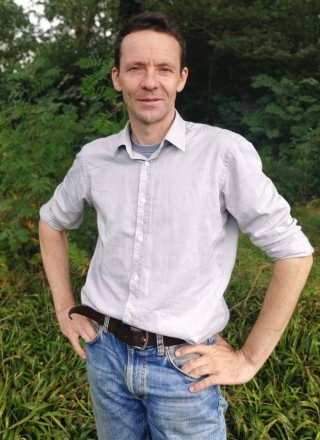
Bird tracking technology – at the frontier of possibilities (Mindaugas Dagys, Ornitela)
Bird tracking has been around for over half a century, with especially fast development in the last two decades. From passive and labour-intensive VHF tags to advanced miniature activity loggers and satellite- or GSM- based solar-powered GPS transmitters, the bird telemetry field has flourished into a vast variety of ever-evolving high tech solutions, where researchers of almost any species of birds can find suitable equipment for their research. Of course, different tracking equipment comes with specific shortcomings and advantages, such as accuracy, weight and size, life-time, labour-intensity or cost-effectiveness to name a few. Miniaturization of electronics components and availability of efficient solar cells has allowed for development of ever smaller and more long-lasting tracking devices that are now often equipped with an array of additional sensors – from seemingly ever-present accelerometers to heart-rate monitors and video cameras. Fast evolution of mobile communication standards provides great opportunities for low-cost and high-volume data download for tracking devices, but also poses new compatibility challenges.
Mindaugas Dagys completed a PhD in Environmental Biology at the University of Manchester and has been working at the Laboratory of Avian Ecology of the Nature Research Centre (Lithuania) for over 20 years, focusing primarily on seabirds wintering in the Baltic Sea, as well as on some other species: cormorants, white storks, to name a few. In 2016 he co-founded the company Ornitela, which develops, supplies, and provides support for OrniTrack GPS-GSM transmitters for bird tracking.
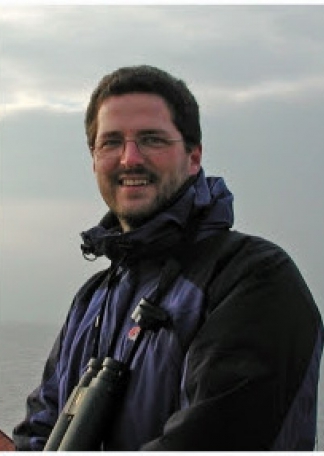
Spatio-temporal movement behaviour as the fundamental basis for applied management (Pieterjan Verhelst, UGent/INBO with input from Jim Casaer, INBO & Eric Stienen, INBO)
As the human population is ever increasing, we live closer to wild animals than ever before, leading to more interactions with even potential conflicts. We modify their habitats leading either to population declines due habitat fragmentation and loss, or in population revival when adequate management measures are taken. To improve the co-existence between men and wildlife in the Anthropocene it is of utmost importance to gain insight in the spatio-temporal movement behaviour, habitat use, presence and abundance trends as well as activity patterns of animals to inform decision makers to take adequate measures. Tracking and observational technologies are an excellent tool to remotely and non-invasively gain insight in animal movement and consequently cover such knowledge gaps. This has led to various insights and management suggestions in Belgium. The elaborated LifeWatch observatory network therefore wants to fill in these knowledge gaps and thereby seeks to become an invaluable asset for science-based decision making in nature management.
Pieterjan Verhelst obtained a PhD in Biology under the auspices of FWO focusing on the seaward migration by European eel (Anguilla anguilla) in various aquatic systems in Belgium. He currently works as a postdoc at the Research Institute for Nature and Forest where he continues his fundamental and applied research on fish migration to inform management to take adequate measures.
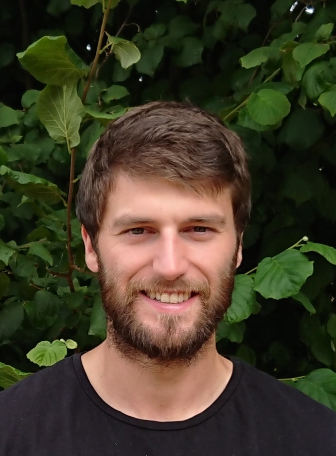
KEYNOTE 2: A bird’s eye view onto GPS tracking: a decade of gull tagging along the Flemish and Dutch coast (Luc Lens, UGent & Wendt Müller, UAntwerpen)
In 2013, the Institute for Nature and Forest Research (INBO) and the Universities of Ghent (UGent) and Antwerp (UA) joined forces in a LifeWatch-based GPS tracking project of two gull species that breed in mixed colonies along the Flemish and Dutch coasts: the Lesser Black-backed Gull and the Herring Gull. In this lecture, Prof. Luc Lens, population ecologist at UGent, and Prof. Wendt Müller, behavioral ecologist at UA, will highlight some fascinating findings from this joint long-term study. Their use of modern tracking technologies has enabled new insights into long-standing fundamental questions, such as how breeding partners coordinate the feeding of their offspring, how spatio-temporal consistency in foraging or migratory behavior benefits energy efficiency, and how this ultimately translates into fitness. Achieving this, however, required deciphering the ecological code underlying the tracking data, which is increasingly a multidisciplinary undertaking involving bioinformaticians, social scientists, and many other disciplines. For this reason, the gull project is today embedded in a large-scale, international and interdisciplinary research network. Ultimately, the researchers hope not only to solve long-standing fundamental research questions, but also to answer applied questions about (hidden) fitness costs of breeding habitat loss, urbanization and human-wildlife conflicts. In this way, they aim to raise public awareness of the growing challenges facing these two gull species, and likely many others, in a rapidly changing world.


